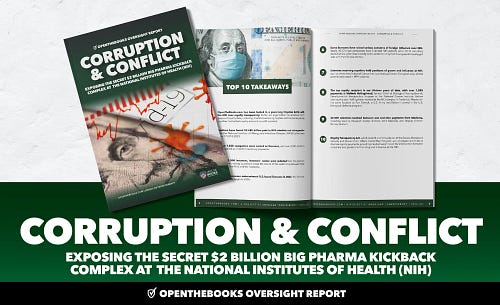Note
The app for independent voices

We launched one of the biggest operations deep into Russia. Dozens of successful strikes. Some targets were 4,000 kilometers away.
But tell me, did you see a single image of a bombed apartment?
A Russian mother screaming in the dust?
A Russian child buried in bricks?
No. Because we don’t hit civilians.
We fight to live, not to destroy.
🇺🇦
You made it, you own it
You always own your intellectual property, mailing list, and subscriber payments. With full editorial control and no gatekeepers, you can do the work you most believe in.


Great discussions
Join the most interesting and insightful discussions.
Open the Books: More Foreign Companies Now Licensing American Medical Innovations, Including in China, Russia.openthebooks.com caps a years-long NIH investigation with new findings, progress made and remaining questions. By OpenTheBooks and Amber Todoroff (09/14/24)
Open the Books asked and answered many of the following questions:
What innovations were being licensed and sold in the private sector?
Which scientists and subagencies were benefitting?
And could any of the payments influence how the government directs its research funds or the public health recommendations it makes?
After a prolonged courtroom tug-of-war over records that were so redacted as to be useless for analysis, Open the Books and their counsel Judicial Watch peeled back layers of the data.
Read this article to learn more about the extent of corruption within our “premier” health agencies and how much more is unknown.
Highlights include:
THE BIG NUMBER: Topline number — a staggering $2.685 BILLION flowing to NIH and its subagencies and scientists. The payments came from over 1,650 companies to over 2,600 scientists and their labs.
A CAPSTONE REPORT: You can download “Corruption & Conflict: Exposing the Secret $2 Billion Big Pharma Kickback Complex at National Institutes of Health.” openthebooks.com/assets…
MORE FOREIGN LICENSEES LEVERAGE U.S. MEDICAL INVENTIONS THAN DOMESTIC COMPANIES — A FIRST IN 2023: 139 non-U.S. licensees versus 102 American licensees. At least 31 countries (many hostile to America) were represented including: China, Russia, Belarus, Cayman Islands and Hong Kong, in addition to United Kingdom, Switzerland, Japan, Germany, France, Canada, India, Ireland, Singapore, Israel and more.
NEW DETAILS ON RULES FOR ROYALTIES: MORE QUESTIONS THAN ANSWERS. Scientists can only get $150,000 a year. Where do the rest of the royalties go? Not fully answerable:
How are royalty funds allocated among inventors, the lab, and the NIH agencies, and
Why are huge payments listed at amounts that would be well beyond the statutory $150,000 cap?
NIH CORRUPTION INCLUDES:
Multitude ways for NIH to keep their vast royalty hauls in-house rather than pay down the national debt;
Significant breathing room to spend two years rewarding scientists not on the patent;
Paying out other bonuses;
Reupping funding for research that’s bearing financial reward;
No evidence NIH has sent a dime back to the Treasury by choice.
IMPACTS: Some in Congress are trying to rein in the corruption, notably:
Rep. John Moolenaar (R-Mich.) trying to make royalties more transparent.
Rep. Nicole Malliotakis (R-N.Y.) pressing Fauci to voluntarily reveal who pays whom for what technologies.
Sen. Rand Paul (R-Ky.) introducing the Royalty Transparency Act. Highlights:
Scientists and agencies must disclose their royalty payments.
Entities that apply for grants and contracts must disclose any related royalty payments sent to government scientists in the preceding ten years.
Members of various related advisory boards must publicly file their financial disclosures.
CONCLUSION: Too many questions remain and the government keeps the system largely impenetrable for the average taxpayer. With $30 billion spent every year to fund research in the medical community and billions going into government from private entities, we need answers and solutions. Open the Books will continue its efforts.















